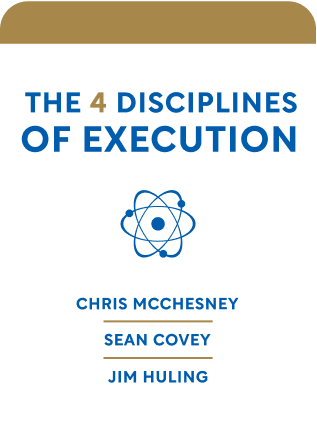

This article is an excerpt from the Shortform book guide to "The 4 Disciplines of Execution" by Chris McChesney, Sean Covey, and Jim Huling. Shortform has the world's best summaries and analyses of books you should be reading.
Like this article? Sign up for a free trial here .
What is the 4DX scoreboard and why is it important? How can you use a scoreboard to motivate your team?
The 4DX scoreboard is used in Discipline 3 for engagement. By giving everyone a visual stake in success, they are more likely to be dedicated to achieving it.
Read on for more about the 4DX scoreboard.
Discipline 3 and the 4DX Scoreboard
Discipline 3 engages your team by making the achievement of the WIG into a game they can win with the 4DX scoreboard. Humans have a natural urge to compete, and people behave differently when they see an opportunity to win—they become highly motivated and engaged, and this drives a high level of performance.
The opposite is also true—it’s human nature not to try as hard as you can if no one’s keeping score. For example, consider this anecdote about an important high school football game. Hurricane Katrina had knocked down the scoreboard, but the field was fine, so the game went ahead. But because the fans couldn’t see the score, no one knew what was going on in the game, and no one cared about the game.
The authors claim that an opportunity to win is one of the most powerful ways to engage people, more powerful than money, benefits, conditions, and workplace relationships. People desperately want the opportunity to achieve.
People perform best when they are personally winning. They don’t necessarily care whether the organization or their boss is winning, they care if the team they’re on is winning.
Winning, in the context of Discipline 3, is achieving the WIG. The score is lead and lag measures.
Your team must always know the score or else they don’t know what to do to win. If they don’t know, they’re not trying to win, they’re just trying to not lose (survive the whirlwind of their daily activities). A conceptual understanding of lead and lag measures is completely different from a team that knows their score.
The leader must set up the game so it’s winnable—the lead measures must influence the lag measures.
Scoring
The score is measured on a literal scoreboard. There are two types of scoreboards, and as you’ll see, the one you want to use is a player’s 4DX scoreboard:
Leader’s (“Coach”) Scoreboard
A leader’s scoreboard is made up of complex spreadsheets or visuals that display leader-level data with an overwhelming amount of data. This scoreboard is so complicated that only the leader can read it or draw any conclusions from it. Leaders create this kind of scoreboard instinctively and you probably already have some version of this that contains data such as historical trends, detailed analysis, and so on.
The leader updates these kinds of scoreboards.
Employees’ (“Players”) Scoreboard
An employees’ scoreboard is made up of simple, visual graphs that show only the important information—where you are and where do you need to be, i.e., are you winning or losing? Leaders have to consciously choose to create (or ideally get their employees to create) this kind of scoreboard
The players update the 4DX scoreboard and it forces them to act.
A player’s 4DX scoreboard has these requirements:
- It’s simple. The card should only contain minimal information. Don’t include any extra information such as reports, year-over-year comparisons, and so on. A simple scoreboard is easier to update, and the easier it is to keep score, the less likely it is that people will put it off when the whirlwind strikes.
- For example, consider a scoreboard at any professional sports game. It contains only a few pieces of information such as the score and time left in the game.
- It’s visible. The scoreboard has to compete with the whirlwind for attention, so it needs to require no extra work to access. Put it where people will see it often, or if you have remote team members, do a digital version. A public scoreboard makes people more accountable, because everyone can see who’s contributing most. If you want to be most motivating, post it where other teams can see it.
- For example, if employees on day and night shifts can see each shift’s scores, they might compete to beat each others’ production numbers.
- It’s complete. Typically, scoreboards have a visual for the WIG and each lead measure. The scoreboard must display the target and where the team is currently at. On the WIG’s visual, the target is the point B value. On the lead measures’ visuals, the target is usually a static standard of performance that must be reached and maintained. If you don’t have data on your target, estimate. (For example, if your WIG is to improve something you’ve never measured before, or it’s something qualitative.) It is critical to have a target line, even if it’s not based on hard data, because if you don’t have a target, you can’t tell if you’re winning. In the interest of completeness, you can also include:
- Legends and simple labels so everyone understands what the scoreboard shows.
- If your scoreboard is anything other than a trend line, it can be helpful to do the math and show the numerical difference between the target and current numbers.
- You can also do ramp-up targets for lead measures rather than a static target, if you prefer.
- It’s quickly readable. Anyone looking at the scoreboard should be able to tell within five seconds if they’re winning or losing. The scorecard must show where they are and where they should be at an exact moment in time. You can use colors such as red and green to make things even more obvious.
The scoreboard must be regularly updated or people will lose interest and the whirlwind will overtake the game.
The 4DX scoreboard itself isn’t what engages people, the game does. For example, no one’s going to comment on how beautiful the scoreboard was at the Olympic gold medal hockey game, they’re going to comment on the game. The scoreboard is a just a reminder—a constant reminder—of the ongoing game.

———End of Preview———
Like what you just read? Read the rest of the world's best book summary and analysis of Chris McChesney, Sean Covey, and Jim Huling's "The 4 Disciplines of Execution" at Shortform .
Here's what you'll find in our full The 4 Disciplines of Execution summary :
- The 4 disciplines that can make any strategy a successful reality
- Why a great plan falls apart when you don't think adequately about execution
- The 6 steps you need to scale the 4DX model across an entire organization






